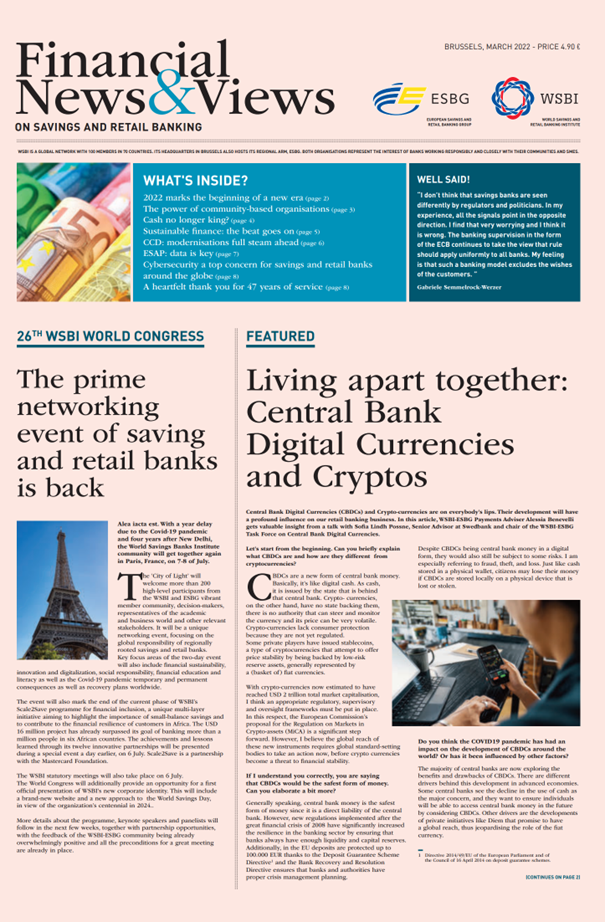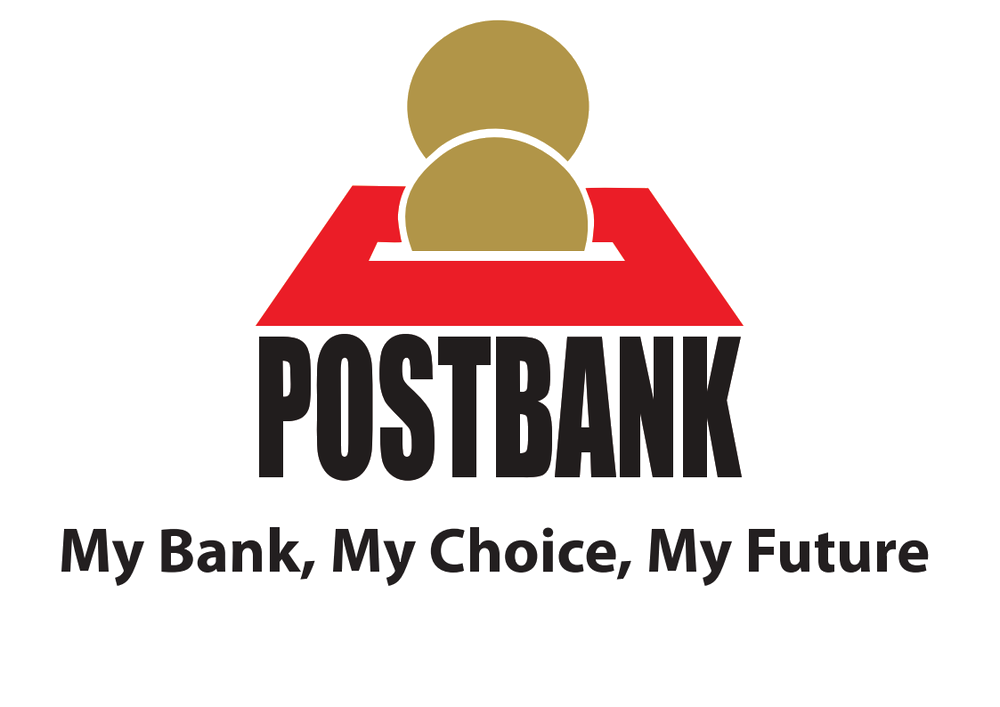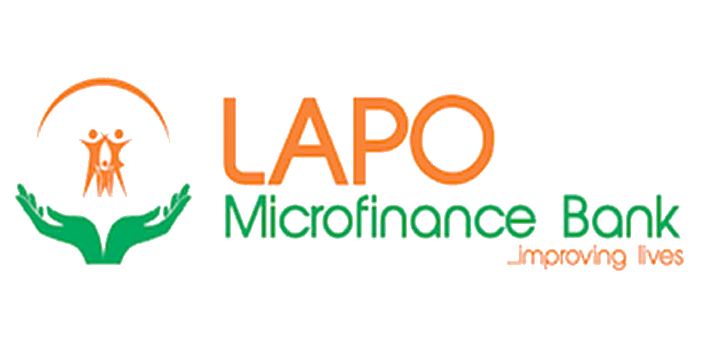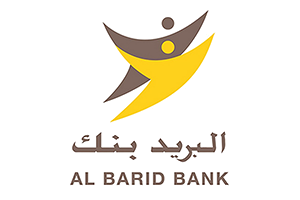Scale2Save Champions Inclusive Financial Services for Nigerians to Fuel Economic Recovery
Scale2Save Campaign
Micro savings, maximum impact.
On the occasion of World Savings Day 2021, Tanzania Commercial Bank Plc (TCB), a WSBI member and learning partner of its programme for financial inclusion, Scale2Save, shared the experience of working with savings groups in rural areas. TCB developed the digital product M-KOBA to address five main challenges savings groups face. Now, TCB is taking M-KOBA further by targeting Village Savings and Loans Associations.
LAGOS, 30 March 2022 – The World Savings and Retail Banking Institute (WSBI)’s programme for financial inclusion, Scale2Save, has reiterated the importance of inclusive financial services for Nigerian women, youths and farmers as a way to fuel the country’s economic recovery and growth. This was stated at the Scale2Save financial inclusion knowledge sharing event attended by key financial stakeholders across the country.
Scale2Save is a six-year programme of the World Savings and Retail Banking Institute in partnership with the Mastercard Foundation aimed at establishing the viability of low-balanced savings accounts and to unravel the extent to which savings help vulnerable people in the society to boost their financial wellbeing.
>>>WATCH THE COVERAGE BY NIGERIAN ‘CHANNELS TV’ STATION
In her keynote address, the Scale2Save Programme Director, Weselina Angelow, highlighted the importance of stakeholders’ knowledge sharing events such as this towards Nigeria’s quest for inclusive growth and economic development. According to her, “As we intensify efforts to improve financial inclusion, it is important that all stakeholders are a part of knowledge and insight-based discourse as this to improve on their processes and make informed financial inclusion decisions.”
Reiterating the commitment of Scale2Save and how the programme is impacting its members as well as other stakeholders, Angelow stated that the programme’s mission is to support financial inclusion initiatives to help millions of Nigerian youths, women and farmers. “We focus on adding value to all stakeholders along the service value chain by empowering our financial service provider partners to become savings-driven, customer-centric institutions,” she said.
>>>SEE THE FULL EVENT PROGRAMME
The Mastercard Foundation’s Access to Finance Lead, Mercy Mutua, stressed that financial inclusion is an enabler to help African youth find a way out of poverty.
“We acknowledge that a lot has been accomplished but there is a long way to go to address barriers, especially for young rural women. It is Important to tailor solutions relevant to context and customer-centric,” she said in a virtual keynote speech.
Commenting on the need to deepen financial inclusion in Nigeria, the Head of Financial Inclusion Secretariat, Central Bank of Nigeria, Dr. Paul Ihuoma Oluikpe, stated that financial service providers must target specific customer needs with financial inclusion products. “There are several products in our financial services space that are too generic. These products are not targeting any value proposition, and are not sufficiently differentiated at the customer level. While there are generic products that appeal to the larger audience, there is the need to drill down at the customer level to target different nuances that exist in the society,” Dr. Oluikpe said.
The WSBI’s 2019 financial service provider survey reveals that attitudes to financial inclusion and low-value savings among financial service providers in Nigeria and other key markets in Africa are being significantly transformed as they have intensified their focus on customers, targeting different groups with tailored accounts and savings products.
Despite the significant progress recorded so far, stakeholders believe that there is still a long way to go to attain a satisfactory level of financial inclusion. Confirming this, the Group Head of Financial Inclusion, FCMB, Adetunji Lamidi, said, “Financial illiteracy is a major barrier to financial inclusion. What we see is a situation where a lot of Nigerians still have this overdependence on the informal financial sector. It takes a long trust-building process to switch them from the informal sector they are familiar with into the formal sector. This is why most of the financial service providers have adopted agency banking where people within the neighbourhood are used as bank representatives. This helps to build confidence, trust and convenience into our financial inclusion strategy.”
Through the intervention of Scale2Save, Financial Service Provider (FPIs) partners continue to innovate products and services that are driving up inclusion among the key target groups. Scale2Save continues to drive the message of financial inclusion while engaging with key stakeholders in target countries that can help actualise the inclusion objective.
Scale2Save
13/10/2023
Savings and Retail Banking in Africa 2022 WSBI survey of Financial Inclusion for micro, small and medium-sized enterprises (MSMEs)
The Savings and Retail Banking in Africa report aims to help improve access to financial services for financially
25/09/2023
WSBI as a catalyst for unlocking the potential of female entrepreneurs
13 October 2023, 9.30am-12pm Hôtel Du Golf Rotana Palmeraie, Marrakech I Morocco
18/09/2023
WSBI’s MD Peter Simon opens the G20 side event panel “Gender equity and SME financing in a digital landscape” at the SME Finance Forum in Mumbai
The World Savings Bank Institute (WSBI-ESBG), with the substantial support of its Indian member, the State Bank of India
01/03/2023
The State of Savings and Retail Banking in Africa
The WSBI has conducted two research reports tracking the progress of retail and savings banks in their financial inclusion efforts across Africa (2018, 2019).
22/02/2023
Driving Formal Savings: What Works for Low-Income Women?
While financial inclusion is expanding globally, the gender gap in access to financial services and products persists
19/12/2022
What a journey it has been!
Between 2016 and 2022 Scale2Save financially included more than 1.3 million women, young people and farmers in Kenya, Uganda, Nigeria, Morocco, Senegal and
14/12/2022
The financial diaries revealed useful insights into young people’s savings, spending and income behavior
It examines their experience in respect to financial inclusion, support structures and opportunities for young entrepreneurs
09/12/2022
The Power of Community-Based Organizations to Mobilize Farmers’ Savings
In Ivory Coast, the world’s largest cocoa producer, cocoa is harvested twice a year, in May-June and in October-December. Between seasons, most smallholder farmers do not generate revenue
15/11/2022
How Can Small Scale Savings Be Offered Sustainably?
Learnings from the Scale2Save Program on successful business and institutional models
15/11/2022
Application of CGAP Customer Outcomes Framework in Uganda
This case study by WSBI's Scale2Save programme applied the CGAP customer outcome indicator framework to test the impact of a new basic savings product positioned in the financial inclusion market and…
Scale2Save champions inclusive financial services for Nigerians
Scale2Save Campaign
Micro savings, maximum impact.
LAGOS, 30 March 2022 – The World Savings and Retail Banking Institute (WSBI)’s programme for financial inclusion, Scale2Save, has reiterated the importance of inclusive financial services for Nigerian women, youths and farmers as a way to fuel the country’s economic recovery and growth. This was stated at the Scale2Save financial inclusion knowledge sharing event attended by key financial stakeholders across the country.

Scale2Save is a six-year programme of the World Savings and Retail Banking Institute in partnership with the Mastercard Foundation aimed at establishing the viability of low-balanced savings accounts and to unravel the extent to which savings help vulnerable people in the society to boost their financial wellbeing.
In her keynote address, the Scale2Save Programme Director, Weselina Angelow, highlighted the importance of stakeholders’ knowledge sharing events such as this towards Nigeria’s quest for inclusive growth and economic development. According to her, “As we intensify efforts to improve financial inclusion, it is important that all stakeholders are a part of knowledge and insight-based discourse as this to improve on their processes and make informed financial inclusion decisions.”
Reiterating the commitment of Scale2Save and how the programme is impacting its members as well as other stakeholders, Angelow stated that the programme’s mission is to support financial inclusion initiatives to help millions of Nigerian youths, women and farmers.
“We focus on adding value to all stakeholders along the service value chain by empowering our financial service provider partners to become savings-driven, customer-centric institutions,” she said.
The Mastercard Foundation’s Access to Finance Lead, Mercy Mutua, stressed that financial inclusion is an enabler to help African youth find a way out of poverty.
We acknowledge that a lot has been accomplished but there is a long way to go to address barriers, especially for young rural women. It is Important to tailor solutions relevant to context and customer-centric,” she said in a virtual keynote speech.
Commenting on the need to deepen financial inclusion in Nigeria, the Head of Financial Inclusion Secretariat, Central Bank of Nigeria, Dr. Paul Ihuoma Oluikpe, stated that financial service providers must target specific customer needs with financial inclusion products.
“There are several products in our financial services space that are too generic. These products are not targeting any value proposition, and are not sufficiently differentiated at the customer level. While there are generic products that appeal to the larger audience, there is the need to drill down at the customer level to target different nuances that exist in the society,” Dr. Oluikpe said.
The WSBI’s 2019 financial service provider survey reveals that attitudes to financial inclusion and low-value savings among financial service providers in Nigeria and other key markets in Africa are being significantly transformed as they have intensified their focus on customers, targeting different groups with tailored accounts and savings products.
Despite the significant progress recorded so far, stakeholders believe that there is still a long way to go to attain a satisfactory level of financial inclusion. Confirming this, the Group Head of Financial Inclusion, FCMB, Adetunji Lamidi, said, “Financial illiteracy is a major barrier to financial inclusion. What we see is a situation where a lot of Nigerians still have this overdependence on the informal financial sector. It takes a long trust-building process to switch them from the informal sector they are familiar with into the formal sector. This is why most of the financial service providers have adopted agency banking where people within the neighbourhood are used as bank representatives. This helps to build confidence, trust and convenience into our financial inclusion strategy.”
Through the intervention of Scale2Save, Financial Service Provider (FPIs) partners continue to innovate products and services that are driving up inclusion among the key target groups. Scale2Save continues to drive the message of financial inclusion while engaging with key stakeholders in target countries that can help actualise the inclusion objective.
Download our learning paper on Digital Financial Inclusion in Nigeria and Uganda: opportunities and remaining challenges
related
Nothing found.
ESBG members waive bank transfer costs to support Ukrainian people
European Savings and Retail Banking Group (ESBG) members are standing in solidarity with people in need in Ukraine by waiving fees on bank transfers to the country already or taking steps towards doing it in the near future.
“Social responsibility is in our members’ DNA. This is why I’ve asked our members to bring financial resources at no cost to people in Ukraine during these difficult times”, said ESBG president Dominique Goursolle-Nouhaud.
The ESBG president has communicated about this topic with all 23 members, who represent over 850 banks in 18 European countries serving more than 160 million customers.
“It is a clear signal of solidarity that many ESBG members have been already waiving fees on bank transfers to Ukraine and others are taking steps towards doing it. Our thoughts are first and foremost with the Ukrainian people and these members are willing to leave profits aside to help”, said Goursolle-Nouhaud.
This meets the intention of a recent call by the European Central Bank (ECB). On 18 March, Andrea Enria, Chair of the Supervisory Board of the ECB, addressed a letter to ESBG and other main EU banking associations asking to suspend or reduce, on a voluntary basis, transaction costs for bank transfers to Ukraine and Moldova. The latter is considered the country for which the intake of refugees is most challenging. The letter followed a recommendation by Members of the European Parliament.
Press contact:
Leticia Lozano, Senior Communications Adviser
Tel. +32 2211 1196
About ESBG
The European Savings Banking Group has 23 members in 18 countries. As some of its members are national organisations, ESBG represents the interests of over 850 banks working responsibly and closely with their communities and SMEs. Together, ESBG members manage assets worth €5,700 billion, serve 162 million Europeans and employ nearly 660,000 people. ESBG is headquartered in Brussels.
related
European Banking Authority (EBA) on ESG risk management
The European Savings and Retail Banking Group (ESBG) submitted its response to the consultation launched by the European Banking Authority (EBA). ESBG insists on the need for consitency with CSRD and CSDDD, the addressees of this guideline should also
Enhancing Transparency in Bank Disclosures: ESBG delivers comprehensive response to the EBA’s Pillar 3 data hub consultation
On 14 December 2023, the European Banking Authority (EBA) published a discussion paper on the Pillar 3 data hub processes and its possible practical implications.
IASB Exposure Draft (ED) on Financial Instruments with Characteristics of Equity
On 29 November 2023, the International Accounting Standards Board (IASB) proposed amendments in an Exposure Draft to tackle challenges in financial reporting for instruments with both
ESBG’s response to the EFRAG Comment Letter on Financial Instruments with Characteristics of Equity
On 29 November 2023, the International Accounting Standards Board (IASB) proposed amendments in an Exposure Draft to tackle
ESBG advocates for increased clarity and streamlining of supervisory reporting requirements
On 14 March, ESBG submitted its response to the European Banking Authority (EBA) consultation on ITS amending Commission Implementation Regulation (EU) 2021/451 regarding supervisory reporting
WSBI-ESBG advocates for robust implementation of the BCBS Pillar 3 framework for climate-related financial risks
On 14 March, WSBI-ESBG submitted its response to the Basel Committee on Banking Supervision (BCBS) consultation on its Pillar 3 disclosure framework for climate-related financial risks
ESBG stresses the need for consistency and clarity in its Response to the SFDR Review Consultation
ESBG submitted its response to the European Commission’s consultation on the SFDR review, aiming to enhance transparency in sustainability-related disclosures within the financial services sector
ESBG response to the EBA’s consultation on Guidelines on preventing the abuse of funds and certain crypto-assets transfers for ML/TF
The guidelines on the “travel rule” delineate the actions that Payment Service Providers (PSPs), Intermediary PSPs
ESBG responds to the SRB consultation on the future MREL policy
The European Savings and Retail Banking Group (ESBG) submitted its response to the consultation launched by the Single Resolution Board (SRB) in December 2023 on the future of the Minimum Requirement for own funds
ESBG’s response to the Commission’s consultation on the GDPR
The primary EU legislation ensuring the fundamental right to data protection is the General Data Protection Regulation
Financial News & Views: March 2022 Edition

WSBI ESBG
Month: March 2022
WHAT’S INSIDE?
2022 marks the beginning of a new era (page 2)
The power of community-based organisations (page 3)
Cash no longer king? (page 4)
Sustainable finance: the beat goes on (page 5)
CCD: modernisations full steam ahead (page 6)
ESAP: data is key (page 7)
Cybersecurity a top concern for savings and retail banks
around the globe (page 8)
A heartfelt thank you for 47 years of service (page 8)
From Ideation to Iteration: Human-Centered Design of Micro-Savings in Nigeria
Scale2Save Campaign
Micro savings, maximum impact.
Five lessons from LAPO Microfinance Bank’s experience using HCD to revamp their child savings account product
By Irene Wagaki
In 2019, LAPO Microfinance Bank of Nigeria undertook an audacious goal to onboard over 168,000 savers in three years through a child savings account. To help them meet this goal, management decided to use a Human-Centered Design (HCD) process to evaluate and revamp their offering. The My Pikin & I account, which means “My Child and I,” seeks to motivate consistent savings through incentives including micro-insurance for mothers and scholarships for their children.

With the support of WSBI’s Scale2Save programme for financial inclusion and IDEO.org, the LAPO team conducted a two-phased HCD process. The first phase involved research, synthesis and ideation, and the second phase was prototyping, iteration and refining. Immersive research techniques such as observation, interviews and focus groups were used, followed by synthesis of findings to draw persona maps and insights that fed into the ideation activities.
Here’s what we learned through this process:
1
Make sure you have a specific strategic outcome in mind that human-centered design can address. In the case of the My Pikin & I product, the goals became clear upon holding initial stakeholder sessions with LAPO Microfinance Bank’s senior management teams. They sought to attract new clients and motivate them to save consistently, thus helping them attain the MFI’s goal for deposit mobilization. HCD was needed to realize that goal as it centers on clients’ personal needs and aspirations while meeting the institution’s strategic goals.
2
Keep it simple. Co-creating with customers requires simplified prototypes. The HCD process helped LAPO Microfinance Bank make communication materials more accessible to its target audience. During the prototyping exercises, customers suggested rewording the messaging to show the benefits one incentive at a time rather than providing loads of information in one poster.
3
Find out what motivates your clients and capitalize on it. Immersive customer interviews helped the LAPO Microfinance Bank team realize that the ability to save was not enough of a motivation for customers. They needed to see tangible benefits from the start in order to save consistently. So the team added a microinsurance incentive, offering premium-free coverage against accident and critical illness, that is tied to consistent savings behaviour. According to the product roadmap, LAPO Microfinance Bank plans to extend the cover to include health insurance. The design team was also intrigued to discover that customers preferred to keep their physical cashbooks as evidence of their savings rather than rely on the fully digitized system the team had designed. This finding provided an opportunity for LAPO Microfinance Bank to build trust by offering a redesigned physical cashbook, thus reinforcing the physical attachment to the cashbook as well as providing a savings tracking tool. Complementary evidence of transactions is also provided via SMS confirmation.
4
Customer-facing agents and personnel require the right tools, not just training. LAPO’s “aha” moment came when they realized that staff didn’t actually need more training on how to explain products’ features to new customers. What they really needed was a handy tool for onboarding customers. The design team created a visual pitch of the My Pikin & I product that spoke to the target customers’ aspirations, needs and concerns. The videos serve as explainers and are displayed on a tablet as part of the customer onboarding process.
5
Take advantage of the transformative potential of the HCD process. At its core, HCD is a highly collaborative process. LAPO’s team brought together people from many different departments, including savings, research, agency banking and customer service. They all participated in prototyping exercises with customers, using the feedback they received to adjust product design. This experience brought about organizational transformation for LAPO Microfinance Bank, as it helped to impart new skills, break hierarchy barriers and develop more innovative mindsets.
Next steps for LAPO: Experimentation Phase
After going through the HCD process, LAPO Microfinance Bank implemented the My Pikin & I product with a heavy on-ground presence of agents and roving staff. These agents continue to complement the bank’s physical and digital banking channels, especially in rural locations.
Their efforts have been successful. Since the products’ re-launch in 2019, over 125,000 new customers have joined LAPO Microfinance Bank and opened My Pikin & I accounts. However, the microinsurance incentive has not experienced a proportionate increase in uptake, with only 7,400 insurance takers. For LAPO Microfinance Bank to optimize the My Pikin & I product fully with its go-to-market strategies, the next step would be an experimentation phase to study which insurance benefits are most effective in sustaining a positive savings behavior.
Ultimately, the human-centered design process should be incorporated as an ongoing way of doing business, as it can help the MFI keep its clients’ needs and desires at the forefront, while also working towards the institutions’ goals.
About the author
Irene Wagaki works as a consultant for WSBI’s Scale2Save programme for financial inclusion in Africa. She is a behavioral researcher and designer at Lime Group Africa with experience in leading Human-Centered Design for digital financial services, savings, microinsurance, financial literacy and agri-business interventions. She holds an MBA and certifications in Behavioral Science, Human Centered Design and Digital Identity.
Scale2Save
13/10/2023
Savings and Retail Banking in Africa 2022 WSBI survey of Financial Inclusion for micro, small and medium-sized enterprises (MSMEs)
The Savings and Retail Banking in Africa report aims to help improve access to financial services for financially
25/09/2023
WSBI as a catalyst for unlocking the potential of female entrepreneurs
13 October 2023, 9.30am-12pm Hôtel Du Golf Rotana Palmeraie, Marrakech I Morocco
18/09/2023
WSBI’s MD Peter Simon opens the G20 side event panel “Gender equity and SME financing in a digital landscape” at the SME Finance Forum in Mumbai
The World Savings Bank Institute (WSBI-ESBG), with the substantial support of its Indian member, the State Bank of India
01/03/2023
The State of Savings and Retail Banking in Africa
The WSBI has conducted two research reports tracking the progress of retail and savings banks in their financial inclusion efforts across Africa (2018, 2019).
22/02/2023
Driving Formal Savings: What Works for Low-Income Women?
While financial inclusion is expanding globally, the gender gap in access to financial services and products persists
19/12/2022
What a journey it has been!
Between 2016 and 2022 Scale2Save financially included more than 1.3 million women, young people and farmers in Kenya, Uganda, Nigeria, Morocco, Senegal and
14/12/2022
The financial diaries revealed useful insights into young people’s savings, spending and income behavior
It examines their experience in respect to financial inclusion, support structures and opportunities for young entrepreneurs
09/12/2022
The Power of Community-Based Organizations to Mobilize Farmers’ Savings
In Ivory Coast, the world’s largest cocoa producer, cocoa is harvested twice a year, in May-June and in October-December. Between seasons, most smallholder farmers do not generate revenue
15/11/2022
How Can Small Scale Savings Be Offered Sustainably?
Learnings from the Scale2Save Program on successful business and institutional models
15/11/2022
Application of CGAP Customer Outcomes Framework in Uganda
This case study by WSBI's Scale2Save programme applied the CGAP customer outcome indicator framework to test the impact of a new basic savings product positioned in the financial inclusion market and…
European Commission review of the Mortgage Credit Directive
On February 28, ESBG sent its response to the European Commission questionnaire on what to include in the upcoming Review of the Mortgage Credit Directive (MCD). The consultation, published in November, covered 55 questions. The review of the legislative text is expected to be launched later this year.
In our response, we asked for a limited review on the necessary topics only. Our overall position is that an in-depth review of the Mortgage Credit Directive would be premature, at this time. Since the last review took place in 2016 and it concerns long-term finance, more time is needed to evaluate the impact of the changes included then.
As the mortgage market is not operating much cross-border, we believe that EU level intervention is not necessary. Consumers rely heavily on local expertise of mortgage advisers and working in their own languages and within national legal frameworks.
However, one area we are in favour of a review is the compatibility with other EU texts. For example, the General Data Protection Regulation, the EU Accessibility Act, and the Rome I Regulation will all impact the MCD so alignment is necessary.
As always, ESBG is pleased to see work being carried out on consumer protection. ESBG members have a long history of financial education and welcome the provision in the MCD text to increase financial education for consumers, which is more defined at national level.
related
European Banking Authority (EBA) on ESG risk management
The European Savings and Retail Banking Group (ESBG) submitted its response to the consultation launched by the European Banking Authority (EBA). ESBG insists on the need for consitency with CSRD and CSDDD, the addressees of this guideline should also
Enhancing Transparency in Bank Disclosures: ESBG delivers comprehensive response to the EBA’s Pillar 3 data hub consultation
On 14 December 2023, the European Banking Authority (EBA) published a discussion paper on the Pillar 3 data hub processes and its possible practical implications.
IASB Exposure Draft (ED) on Financial Instruments with Characteristics of Equity
On 29 November 2023, the International Accounting Standards Board (IASB) proposed amendments in an Exposure Draft to tackle challenges in financial reporting for instruments with both
ESBG’s response to the EFRAG Comment Letter on Financial Instruments with Characteristics of Equity
On 29 November 2023, the International Accounting Standards Board (IASB) proposed amendments in an Exposure Draft to tackle
ESBG advocates for increased clarity and streamlining of supervisory reporting requirements
On 14 March, ESBG submitted its response to the European Banking Authority (EBA) consultation on ITS amending Commission Implementation Regulation (EU) 2021/451 regarding supervisory reporting
WSBI-ESBG advocates for robust implementation of the BCBS Pillar 3 framework for climate-related financial risks
On 14 March, WSBI-ESBG submitted its response to the Basel Committee on Banking Supervision (BCBS) consultation on its Pillar 3 disclosure framework for climate-related financial risks
ESBG stresses the need for consistency and clarity in its Response to the SFDR Review Consultation
ESBG submitted its response to the European Commission’s consultation on the SFDR review, aiming to enhance transparency in sustainability-related disclosures within the financial services sector
ESBG response to the EBA’s consultation on Guidelines on preventing the abuse of funds and certain crypto-assets transfers for ML/TF
The guidelines on the “travel rule” delineate the actions that Payment Service Providers (PSPs), Intermediary PSPs
ESBG responds to the SRB consultation on the future MREL policy
The European Savings and Retail Banking Group (ESBG) submitted its response to the consultation launched by the Single Resolution Board (SRB) in December 2023 on the future of the Minimum Requirement for own funds
ESBG’s response to the Commission’s consultation on the GDPR
The primary EU legislation ensuring the fundamental right to data protection is the General Data Protection Regulation
Customer protection
Proposed Solutions and Actions
Simplification of information
Consumer credit is normally partially executed through the granting of a handful of small operations to consumers. Those operations are of limited complexity and – in comparison to mortgage credit – of small amounts, but are, in turn, regulated by considerably complex rules.
As an example of that, the CCD requires creditors to give excessively detailed information to the consumer prior to entering a consumer credit agreement. Nonetheless, consumers ignore information which is too complex or difficult to remember and there is evidence that simpler information with fewer figures is much more effective at landing critical messages. That information may refer to information that only reflects the specifics of the product and meets with client’s expectations for short and clear information – for example – the repayment periods, the amount of the repayment instalments and the applicable interest rate.
Reduction of information
Regarding the pre-contractual information, it is important to focus on diminishing the number of precontractual documents, which banks are obliged to serve to consumers in any case. This approach has not proved itself to be useful for consumers and for that reason the requirements for serving precontractual information and Standard European Consumer Credit Information aren’t helping in achieving the objectives of the Directive. Bearing digitalisation in mind, the required information can barely be presented in a clear and comprehensive way on mobile devices.
A critical look should also be taken at the amount of mandatory information to be included in the credit agreements themselves. From the consumer’s point of view, the agreement should contain only what is necessary, i.e. in addition to the total amount of credit, above all the repayment plan, the default interest rate and information about the typical consequences for the borrower during the performance of the contract (consequences of overdue payments, rights of withdrawal, early repayment conditions).
The reduction of information may be also observed through the role of the right of withdrawal. The right of withdrawal is an instrument for the consumer’s protection and when it is granted to the consumer it should diminish some of the requirements for the service providers, especially in the field of the pre-contractual information that needs to be provided to consumers. If the amount of information is not diminished, there is not a substantial meaning of the right of withdrawal.
Regulate activities rather than institutions
In ESBG’s opinion, gold plating practices in the implementation of the CCD by Member States have limited its effectiveness. The use of innovative technologies has prompted the arrival of new operators to the consumer credit market. Unregulated entities can take advantage of the consumer trust that regulated entities have gained through the years, and even put that trust at risk if they fail to deliver fair and transparent results, increasing regulated entities’ reputational risk. Therefore, a strict implementation of the CCD by all Member States would give consumers better visibility on their level of protection in Europe. In this sense, the CCD should regulate that consumer credit activity should be a reserved activity and should require the application of policies on responsible lending, transparency and customer protection. Any revision to the CCD should be based on the principle “same activity, same rules”.
Creditworthiness assessment requirements should be flexible and preserved for each Member State and each credit institution. There is no need for harmonisation.
In our view an effective creditworthiness assessment can’t be standardised, because of the following nonexhaustive reasons:
- it should be based on the knowledge of the borrower and on the ability to take into account the specificities of his situation, not on a mechanically applied criterion. This knowledge – inherent to the banker’s job – can’t be standardised.
- standardising the assessment of risk profile would block the market without taking into consideration the peculiarities of each Member State.
- it also may lead to a legal risk of not being able to deny credit if the European criteria are met.
- common indicators wouldn’t allow to take into consideration the economic and cultural background: the same indicators will not necessarily mean the same in different countries (e.g.: savings habits, national rates of divorce, cost of education for children).
Identified Concerns
The CCD evaluation has so far looked at the relationship between the needs and problems in society and the objectives of the Directive.
However, more importantly for us is the impact that digitalisation has had on consumer credit. The emergence of a variety of new technologies has commanded the development of the digital transformation in the commercial and corporate aspects of banking. It is easy to observe a significant upward trend in the budget share dedicated to R&D.
However, the CCD did not anticipate that technological disruption, and new digital means have brought a diverse set of innovative distribution channels, and along with them, new communication means, new ways to access credit and the uniformity of credit agreements.
The use of smartphones, tablets, computers, headsets, and other devices, for not only searching products, but also for entering into credit agreements, is a reflection of the reality that has exceeded the expectations considered by the legislators when agreeing the CCD.
In this regard, special attention needs to be paid to the information to be provided to consumers before entering into the credit agreement. In some Member States, particular attention must be paid to the actual conclusion of the credit agreement when using these devices. Art. 10 (1) CCD, in which the text form of credit agreements is standardised as sufficient, should be harmonised to a maximum in the future, in order to enable a digital conclusion. At present, many Member States have adopted stricter rules (e.g. written form), representing a real barrier for the single market. In our view, in order to adjust the already adopted measures to the new digital technologies it is necessary to assess how much detailed information is required and how it can best be provided to consumers.
We have noticed that new market players such as crowdfunding platforms or SMS loan-providers have not yet played such a major role in the area of consumer loans. Nevertheless, we see a tendency for this role to increase in the future and for considerable changes to be expected in consumer loans as well.
Why Policymakers Should Act
We fully support the principles of the CCD, but we believe that it is reasonable to measure the objectives of the Directive having in mind that:
consumers want to receive clear and manageable information in a short time.
- it is important not to overburden the consumers with information.
- its requirements should be suitable for new technology and distribution channels.
- a clear balance should be created between the objectives of the Directive and the rights of the creditors.
Background
The EU Consumer Credit Directive (CCD) is designed to strengthen consumer rights and help potential customers make an informed choice when signing up to a credit agreement. Lenders provide standardised information on the product, allowing clear comparison by the consumer with other products available to them. In addition, lenders provide detailed information on the annual percentage rate of change; including the total cost of the credit.
The EU CCD was finalised in 2008. In 2011, an annex was added to clarify the rules on calculating the Annual Percentage Rate of Charge (APR). Finally, in 2014 a report was published in the Implementation of the directive. In 2019, the European Commission launched a consultation on the evaluation of the CCD, following on from an evaluation and fitness check roadmap. The review – still ongoing – aims to assess the effectiveness, efficiency, coherence, relevance and EU added value of the Consumer Credit Directive.
related
European Banking Authority (EBA) on ESG risk management
The European Savings and Retail Banking Group (ESBG) submitted its response to the consultation launched by the European Banking Authority (EBA). ESBG insists on the need for consitency with CSRD and CSDDD, the addressees of this guideline should also
Enhancing Transparency in Bank Disclosures: ESBG delivers comprehensive response to the EBA’s Pillar 3 data hub consultation
On 14 December 2023, the European Banking Authority (EBA) published a discussion paper on the Pillar 3 data hub processes and its possible practical implications.
IASB Exposure Draft (ED) on Financial Instruments with Characteristics of Equity
On 29 November 2023, the International Accounting Standards Board (IASB) proposed amendments in an Exposure Draft to tackle challenges in financial reporting for instruments with both
ESBG’s response to the EFRAG Comment Letter on Financial Instruments with Characteristics of Equity
On 29 November 2023, the International Accounting Standards Board (IASB) proposed amendments in an Exposure Draft to tackle
ESBG advocates for increased clarity and streamlining of supervisory reporting requirements
On 14 March, ESBG submitted its response to the European Banking Authority (EBA) consultation on ITS amending Commission Implementation Regulation (EU) 2021/451 regarding supervisory reporting
WSBI-ESBG advocates for robust implementation of the BCBS Pillar 3 framework for climate-related financial risks
On 14 March, WSBI-ESBG submitted its response to the Basel Committee on Banking Supervision (BCBS) consultation on its Pillar 3 disclosure framework for climate-related financial risks
ESBG stresses the need for consistency and clarity in its Response to the SFDR Review Consultation
ESBG submitted its response to the European Commission’s consultation on the SFDR review, aiming to enhance transparency in sustainability-related disclosures within the financial services sector
ESBG response to the EBA’s consultation on Guidelines on preventing the abuse of funds and certain crypto-assets transfers for ML/TF
The guidelines on the “travel rule” delineate the actions that Payment Service Providers (PSPs), Intermediary PSPs
ESBG responds to the SRB consultation on the future MREL policy
The European Savings and Retail Banking Group (ESBG) submitted its response to the consultation launched by the Single Resolution Board (SRB) in December 2023 on the future of the Minimum Requirement for own funds
ESBG’s response to the Commission’s consultation on the GDPR
The primary EU legislation ensuring the fundamental right to data protection is the General Data Protection Regulation
Strengthening the quality of corporate reporting and its enforcement in the EU
The EU corporate reporting framework has been developed with the purpose of ensuring that companies publish the right quantity and quality of relevant information with the ultimate purpose of allowing investors and other interested stakeholders to assess companies’ performance and governance and to take decisions based on that.
The consultation aims to evaluate the impact of the EU framework on the three pillars of high quality and reliable corporate reporting: corporate governance, statutory audit and supervision. This position paper is based on ESBG’s response to the consultation.
The European Commission adopted its proposal for a EUGBS in July 2021 and later launched a public consultation. In this context, ESBG has recently finalised a position paper that indicated some of the main concerns with the adopted proposal.
related
European Banking Authority (EBA) on ESG risk management
The European Savings and Retail Banking Group (ESBG) submitted its response to the consultation launched by the European Banking Authority (EBA). ESBG insists on the need for consitency with CSRD and CSDDD, the addressees of this guideline should also
Enhancing Transparency in Bank Disclosures: ESBG delivers comprehensive response to the EBA’s Pillar 3 data hub consultation
On 14 December 2023, the European Banking Authority (EBA) published a discussion paper on the Pillar 3 data hub processes and its possible practical implications.
IASB Exposure Draft (ED) on Financial Instruments with Characteristics of Equity
On 29 November 2023, the International Accounting Standards Board (IASB) proposed amendments in an Exposure Draft to tackle challenges in financial reporting for instruments with both
ESBG’s response to the EFRAG Comment Letter on Financial Instruments with Characteristics of Equity
On 29 November 2023, the International Accounting Standards Board (IASB) proposed amendments in an Exposure Draft to tackle
ESBG advocates for increased clarity and streamlining of supervisory reporting requirements
On 14 March, ESBG submitted its response to the European Banking Authority (EBA) consultation on ITS amending Commission Implementation Regulation (EU) 2021/451 regarding supervisory reporting
WSBI-ESBG advocates for robust implementation of the BCBS Pillar 3 framework for climate-related financial risks
On 14 March, WSBI-ESBG submitted its response to the Basel Committee on Banking Supervision (BCBS) consultation on its Pillar 3 disclosure framework for climate-related financial risks
ESBG stresses the need for consistency and clarity in its Response to the SFDR Review Consultation
ESBG submitted its response to the European Commission’s consultation on the SFDR review, aiming to enhance transparency in sustainability-related disclosures within the financial services sector
ESBG response to the EBA’s consultation on Guidelines on preventing the abuse of funds and certain crypto-assets transfers for ML/TF
The guidelines on the “travel rule” delineate the actions that Payment Service Providers (PSPs), Intermediary PSPs
ESBG responds to the SRB consultation on the future MREL policy
The European Savings and Retail Banking Group (ESBG) submitted its response to the consultation launched by the Single Resolution Board (SRB) in December 2023 on the future of the Minimum Requirement for own funds
ESBG’s response to the Commission’s consultation on the GDPR
The primary EU legislation ensuring the fundamental right to data protection is the General Data Protection Regulation

















































